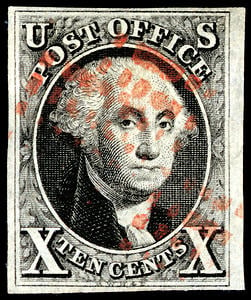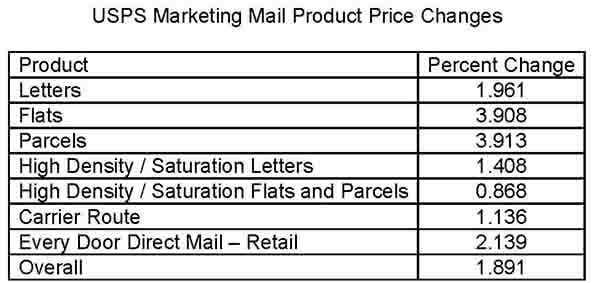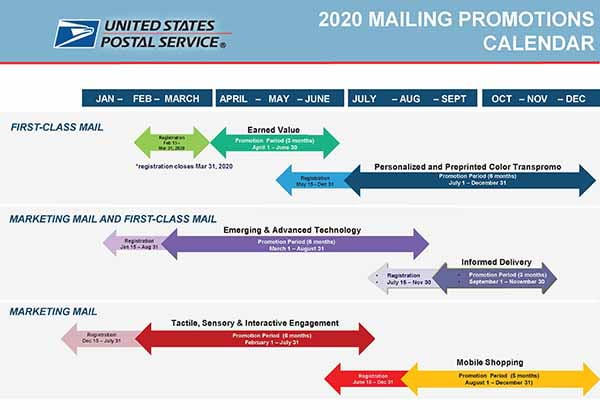
On October 9, 2019, the United States Postal Service (USPS) filed R2020-1: Notice of Market-Dominant Price Change. The Postal Regulatory Commission (PRC) will now review the rates to ensure they’re in compliance with the relevant statutes. The expected implementation of the new rates is on January 26, 2020.
Overall, the rate increase is consistent with rate of inflation as determined by the Consumer Price Index (CPI), or 1.9%. To be compliant with past PRC rulings, the rate increase for some flat products is higher, as the USPS is losing money on those categories.
Not surprisingly, the rates for single-piece, First Class Mail isn’t changing. Last year, the price of a single Forever Stamp was raised to $0.55, a 10% increase (more on that later). That means slightly higher than CPI increases for other categories. The new structure gives commercial mailers an incentive to present their mail at the AADC rate.
For USPS Marketing Mail, price increases for most categories are at, or below 1.9%. The noted differences are for flats (3.908%) and parcels (3.913%). The additional increases are to move the prices for those products to what it actually costs the USPS to process the pieces.
The good news for mailers is that the new Board of Governors supported the inclusion of mailing promotions in the rate case. The promotions have encouraged mailers to incorporate innovative technologies to make mail more relevant to the consumer. The six promotions proposed for 2020 are Tactile, Sensory and Interactive Engagement; Emerging and Advanced Technology; Mobile Shopping; Informed Delivery; Personalized and Preprinted Color Transpromo; and Earned Value.

As the blog post title suggests, these changes are the first postal rate increases for the upcoming year. There’s at least one more rate increase for 2020, and potentially a postage decrease. Issues that will further impact rates include:
- Self-declared rates for international mail
- Future rulings on the Carlson v. Postal Regulatory Commission court case
- PRC 10-Year Rate Review
This September, the Universal Postal Union (UPU) held an Extraordinary Congress in Geneva, Switzerland. The Congress addressed the issue of rates of bulky letters and small packages, with the potential withdrawal of the United States from the UPU hanging in the balance. By acclamation, the Congress adopted “Option V”, which allows for a phase-in of self-declared rates beginning in July 2020.
The USPS and several other posts will be the first countries to self-declare rates. Concurrent with this change, bulky letters and small packages (Inbound Post E Format items), will no longer be covered under the Market-Dominant Category. New rate filings are expected in the late spring of 2020.
Also in September, a 3-judge panel of the D.C. District Court of Appeals ruled for the plaintiff in Carlson v. Postal Regulatory Commission. The Court decided that the PRC didn’t follow proper procedures nor fully consider the 14 statutory factors when approving the price increase. The PRC decision approving the $0.55 stamp was declared invalid.
The USPS and the PRC have taken different approaches to the ruling. The USPS has appealed to the full court, while the PRC simply issued a new order approving the rates. With past as prologue, it’s probable that Mr. Carlson will continue his fight, potentially taking the case to the U.S. Supreme Court. The courts ruled against the exigent rate increase, so this issue isn’t over. Yet.
It’s been 2 years since the PRC released their 10-year review of the system for regulating postage rates for Market Dominant products. At that time, the PRC came to a split decision - that some aspects of the system of regulating rates and classes for market dominant products have worked as intended by the PAEA. However, the system has not achieved the overall objectives. Accordingly, the PRC proposed a new system for setting rates, raising the cap and incentivizing the USPS to improve performance.
Since then, the PRC has gone through several membership changes, and now has a complete board. There have been rumblings that an announcement on the rate making system is imminent. Depending on the PRC’s decision, the USPS could file a second rate case in 2020, alleviating a dire financial situation.
Impacting each of these 3 factors is another variable – the pending appointment of the 75th Postmaster General of the United States.

